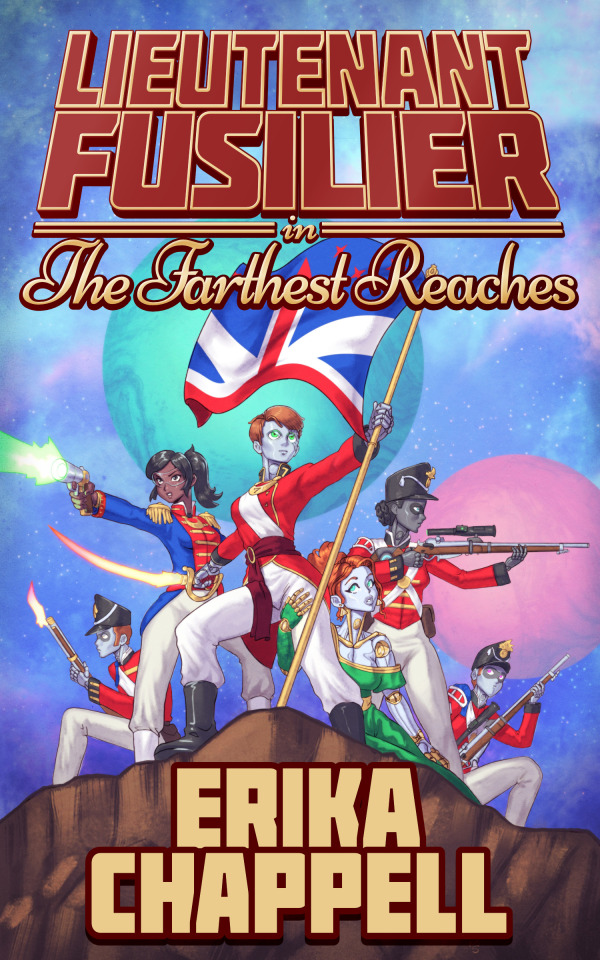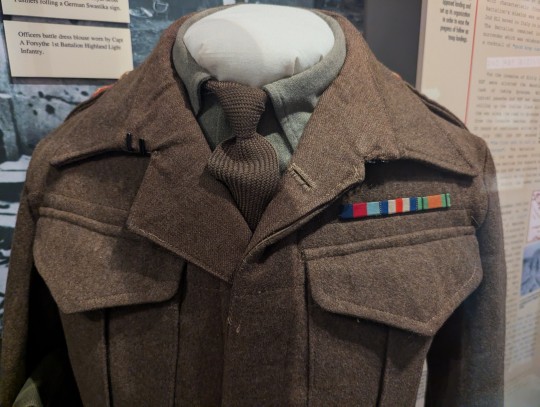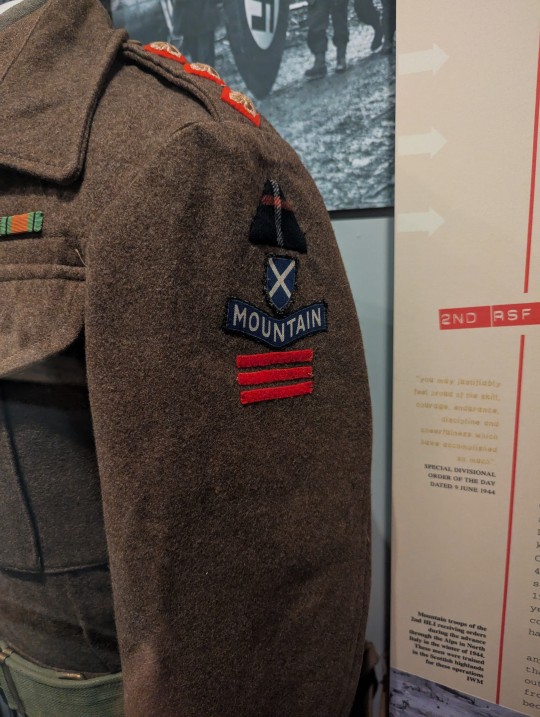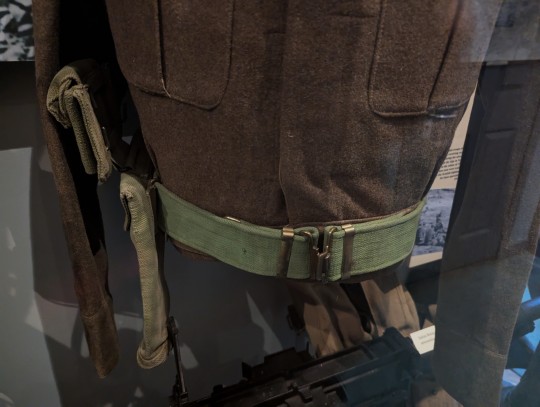#fusiliers
Text
Lancashire Fusiliers War Memorial
A memorial dedicated to the Fusiliers regiment in Lancashire. Read more here
This war memorial is dedicated to the members of the Lancashire Fusiliers, in honour of its First World War casualties.
It was first erected outside Wellington Barracks in the town of Bury, opposite the regimental headquarters. When those barracks were demolished in the 1970s the memorial was relocated to a temporary site, and then moved to its current position in 2009 in the heart of the town…

View On WordPress
0 notes
Text

Blackbarred wrasse and yellowtail fusiliers at Sea Life Sunshine Coast in Mooloolaba, QLD, Australia
#tropical fish#fish#fishes#fishblr#wrasse#wrasses#fusilier#fusiliers#Caesio#aquarium#parrotfish#parrot fish
0 notes
Text
Talks about the importance of fusiliers and fusees in the Continental Army during the Revolutionary War.
#fusiliers#fusees#riflemen#rifles#revolutionary war#continental army#us history#wordpress#internet archive#2017
0 notes
Text

British soldiers from the Lancashire Fusiliers await the order to advance - Beaumont-Hamel, Somme 1916
#world war 1#world war one#ww1#hamel Beaumont#Somme#1916#britisharmy#lancashire#Lancashire fusiliers#ww one
488 notes
·
View notes
Text
A simple home-cooked dinner consisting of just two dishes. A big Fried Redbelly Yellowtail Fusilier (黄尾鱼) tail occupied half of my plate with sliced fried fishcake taking up a corner. Locally, this fish is also called potato fish (番薯鱼) and is commonly used to make fish balls. Fluffy steamed white rice to go with the two types of fish dishes.

#Mum's Cooking#Home-Cooked#Redbelly Yellowtail Fusilier#Caesio cuning#黄尾鱼#Potato Fish#番薯鱼#Fish#Fried#Fish Tail#Crispy#Fishcake#鱼饼#White Rice#Dinner#Food#Buffetlicious
81 notes
·
View notes
Text

エストニアの国旗みたい🇪🇪
@マリンワールド海の中道
You look like the flag of Estonia🇪🇪
@Marine World Umino-Nakamichi
288 notes
·
View notes
Text
Well, I did one for whispers so I might as well do one for Lieutenant Fusilier.

Just finished it, really good book. Very much do recommend :)
Stars, I Need therapy
66 notes
·
View notes
Text
I wrote (another!) novel!
It took me almost three years of editing and refinement, but my second novel, Lieutenant Fusilier in the Farthest Reaches, is finally out in digital form! A print version will be out SoonTM.
It's... really hard to pitch this book, but I'll do my best. In a post-scarcity, strangely utopian alternate future stuck in 19th century aesthetics, all of humanity has been elevated to positions of wealth and nobility by a cheerfully industrious robotic working class. With nations united in a Galactic Concert, they spread through the stars; while so far empty of sapient peers, there lurks dangerous creatures and the automated remnants of long-lost empires.
Most machines are very happy where they are, working to make humans richer and more comfortable, but Theodora Fusilier (one of many thousands to share that name) has ambitions. She's saved for decades to afford an officer's commission in the British Army, a position normally reserved for humans, and today's the day. What's the worst that can happen?

It's a gonzo blend of weird sci-fi imagery, a pastiche of the Richard Sharpe novels, a character study of a workaholic, and a deconstruction of the imperialist themes in portal fiction. Like much of my work, it's an attempt to point my interest in military history toward something constructive, and it was great fun to write and hopefully a lot of fun to read.
You can get it on DriveThruFiction or Itch.io. If you get the digital version, you'll get a discount to the print version when it comes out so you don't get double-dipped.
The deliberately misleading cover was created by the amazing Molly Skyfire (NSFW link).
197 notes
·
View notes
Text

Royal Welsh Fusiliers cleaning their rifles and making final preparations for the protection of their slit trench in the attack on Evrecy, South West of Caen, France.
62 notes
·
View notes
Text
Rereading the Lesbian Robot Sharpe Analogue Story after a while and as someone who was far too fixated on that whole era growing up I can’t help but shriek at the British/Prussian robot slapfight


“Even as angry as I was…”
(courtesy once again to @open-sketchbook who first penned this here and has a cool new version now)
#is there a word for napoleonic sci-fi fantasy#napoleon#lieutenant fusilier#napoleonic era#in. y’know. in space.#Lieutenant Fusilier in The Farthest Reaches
58 notes
·
View notes
Text
The Jacobite
45 407 The Lancashire Fusilier
LMS Stanier Class 5-4-6-0 ‚Black Five’ Hier auf dem
Glenfinnan Viaduct, Inverness-shire (Siorrachd Inbhir Nis), Schottland.\
Der Zug fährt von Ford Williams (An Gearasdan) nach Mallaig und wurde nach den Jakobiten, deren letzter Aufstand gegen die britische Krone 1745 in Glenfinnan seinen Anfang nahm.
The Jacobite
45 407 The Lancashire Fusilier
LMS Stanier Class 5-4-6-0 'Black Five' Here on the Glenfinnan Viaduct, Inverness-shire (Siorrachd Inbhir Nis), Scotland
The train runs from Ford Williams (An Gearasdan) to Mallaig and was named after the Jacobites, whose last uprising against the British Crown began in Glenfinnan in 1745.
The Jacobite
45 407 Le Fusilier du Lancashire
LMS Stanier Class 5-4-6-0 'Black Five' (cinq noirs) lci sur le
Glenfinnan Viaduct, Inverness-shire (Siorrachd Inbhir Nis), Écosse
Le train circule de Ford Williams (An Gearasdan) à Mallaig et a été baptisé du nom des Jacobites, dont la dernière révolte contre la couronne britannique a débuté à Glenfinnan en 1745.
#dampflokblog.de#steam train#Jacobite#scotland#railway#dampflok#stoom locomotief#eisenbahn#steam locomotive#локомотив#lokomotywa#locomotive à vapeur#45 407#鉄道#The Lancashire Fusilier#locomotora
53 notes
·
View notes
Note
Do you have a favorite colorful fish, fish giver? :3
I don’t know about favorite but i am real fond of this lil guy

You get a Suez Fusilier
Caesio suevica
47 notes
·
View notes
Photo


Pompanos and yellowtail fusiliers on Fitzroy Island, QLD, Australia
0 notes
Text
"Just a rifleman": Fusiliers and "fusees" in the Continental Army

Courtesy of page 20 of Bill Guthman's article on arms and armaments during the Revolutionary War period. The bottom musket is a fusil.
Recently at my job as a genealogist, I found a Revolutionary War soldier who listed himself as a "fusilier" in his pension. One of the former military men at the place I work said something like (and I'm paraphrasing), "oh, that's just a rifleman" and as a result, I didn't add it to the description of the service performed by this soldier, who had served in the Continental Army. But it is more than something to be dismissed just like that. From looking at this site and that (dictionary sites mostly), I came up with a rough definition of a fusilier:
A soldier or infantryman with a light flintlock musket (fusil). European in origin, especially British, something just a private or British soldier of low rank. Can also refer to a rifleman or light infantry.
Still, this, and of itself does not tell about the story of fusiliers in the Continental Army, a story which is different from what I've previously written. Those who served in the British line, French Line (also see here and here) or "Hessian" line (also see here) are more extensively documented.
Reprinted from my History Hermann WordPress blog.
Information on fusiliers scarce but rewarding
Some have written that for the 30,000 "Hessian" soldiers fighting on the side of the British crown, "infantry troops and elite fusilier units participated in almost every campaign of the war." But what about the continental line? The Historical Dictionary of the U.S. Army only notes that in the 1700s, a "basic infantryman replaced the four varieties of infantrymen that existed previously: pikeman, musketeer, fusilier, and grenadier" but says nothing about the Continental Army. Letters on Founders Online seem to only mention the term "fusilier" in reference to the British line (also see here) or Hessian line. Only one reported letter, other than a passing reference to a "Fusilier" company in 1775, from French Colonel Armand, called Charles Armand Tuffin, marquis de la Rouërie, to George Washington, which had a plan for "...two fusilier companies" among others as part of an organizational plan for a military corps. One website seems to hint at more involvement of fusiliers in the war against the British, saying that "German colonists in Charleston, South Carolina formed a fusilier company in 1775." No other details are provided. Another website, reviewing a book about British fusiliers, interestingly notes that fusiliers were used by the British as shock troops, almost, against the rebelling colonists during the Revolutionary War:
Many Fusiliers — a unit name derived from fusil, a type of early flintlock musket — were trained to perfect these shock tactics that combined quick movement with a volley followed by a bayonet charge overwhelming the enemy before they could reload their muskets...the Fusiliers and other Redcoats could outfight the Rebels...Romances with American women helped take away more Fusiliers from the ranks than battles with the Continental Army...It took the influence of a former Fusilier officer, Henry Calvert, an aging Cornwallis and other British officers to reintroduce light infantry tactics.
Two pensions of soldiers who fought within the continental line name the participants as "fusiliers." Sometimes it was even spelled "Fuzileers."
The first is a man names James Starr living in Baltimore County, Maryland, noting that he would a fusilier in the French line. His pension says that he was a corporal "in the fusiliers in the First Partisan Legion, under my [C armand M’qis dela Rouerie] Command" and later a witness testified that he was a "Corporal in the Company Called Fusiliers stationd at York during the winter previous to the disbandment of the Revolutionary Army" commanded by a French officer. The second is for a man named John Matthews, saying he was also a part of the "company of fusiliers."
Other records, even for the word "fusil" don't seem to turn up relevant results, just sales of "fusils," here, there, and everywhere. There is also other mentions of it as well. The term fusil became fusel or fuzee in English, coming from the French word of fusil as one site reports.The reality actually seems that "fusil, fuzil, and fusee are corruptions of the Italian word fucile, meaning flint." Using the alternative spellings, it is clear that a fusil was carried by Captain John Mott when crossing the Delaware River in 1776:

Courtesy of Stryker's The Continental Army at the Crossing of the Delaware River
It seems that at least within the Continental line those who were officers carried fusils, meaning that to call oneself a "fusilier" seemed to indicate a level of rank, specifically those who were non-commissioned officers or "noncom," as some abbreviate it for short. Even major general John Sullivan was quoted as saying that "fusees for the Officers would be proper" but none were available at the time. They were prized enough that there is even a time when supporters of the British crown stole the "fusee" of a Continental Army general, Gold Sellick Sillman. George Washington even ordered, reportedly, the seizure of counterfeit "fusees" from France as some Continentals (and even militia) seemed to use those of Spanish manufacture.
While some describe fusils as something that was captured, the Society of Cincinnati succinctly describes them as a "smoothbore shoulder arm that was lighter and shot a smaller caliber ball than muskets in use by many British and American troops during the Revolutionary War" with officers buying fusils from France specifically.
Without going any further, it seems clear that within the Continental line there was no unit of "fusileers"/"fuzileers" but officers carried fusils (fusels, fusees and fuzees). That is what the next section is about.
Fusees in the Continental Army
Fusees were mentioned in varying revolutionary-era documents, apart from their mentions in lines other than among the continentals. David Hackett Fischer even mentions fusees, writing in Washington's Crossing that "American troops were not properly intimidated by this weapon [Lochaber axe], and it was replaced by carbines or fusees in the New World," with the Maryland State Archives noting that Scottish-born Maryland soldier William McMillian may have fought against his kinsmen in such regiments.
In November 1775, a Committee Report on Petition from Nova Scotia declared that fusees were among the weapons to arm two battalions:
That Said Battalions, shall be armed in the following Manner, vizt. a light Fusee, fitted for Slinging, a large Hatchet with a long Handle, and a Spear, with thirty two Rounds per Man of Ammunition.
The following year, in 1776, fusees would be among the ordinances wanted for the Continental Army. In the same document, it would declare that "if the above port-fires, tubes, and fusees can be procured ready fitted, then the articles of saltpetre, antimony, and brimstone, mentioned above, might be omitted."An orderly book the same year would talk about the "proper Quantity of fusees." Also, in an account of Alexander Graydon, who observed the building of Fort Washington, in 1776, said that when opposing the attack of a ruffian, that he, "clubbing his fusee, and drawing it back as if to give the blow, I fully expected it, but he contented himself with the threat." In evacuating Fort Washington, Continental officers even dropped their fusees and cartridge boxes as they fled.
By 1777, an orderly book for the Pennsylvania State Regiment described how "the Captains and subalterns [would be] standing with their Fusees over their left arms, are to bring them to an order and take off their hats." The same year, the new Pennsylvania government looked to disarm supporters of the British crown, with weapons including "Musquetts, Carbines, fusees, rifles, & other fire arms, & for swords & Bayonetts."
Alexander Dow, a soldier in the Continental line, recalled his use of a fusee while fighting alongside Colonel Aaron Burr in 1777:
Our whine the moon was down, and by full consent of Officers maid seekret and sudant atack / Emagining them to be one hundred strong Coll Burr proportenad our difrent atacks in platuns, he pitched [mine?] to Enter first without aney alarm and Chalange the whole to serender which I dide that moment finding them both Brave and Obestinat, as they flew to ther arms I droped three of them with my Baynet on the musel of my fusee by this time one stout felow atackted me in the same manor But I parried him off and in his Indevering to disarm me he Bit sevral holes in the Baral of my fusee, whilst my worthey [Serjt.?] Williams Cam[e] to my releff and stabed him Dead, I then turned on another full armed who beged for mercy I bid him serender his arms to me which he did into my hand, by this time the rest of our partey had dun ther part and taken one moar prisner, with which we finding no moar Live men we Cam[e] of[f] living sixten on the Ground which had a still moar Grand Efect for by ten Oclock in the morning the whole of the Enemy were Gon [?] in Great fright / thiss was on the 13th Day of Septr 1777
Ethen Allen of the Green Mountain Boys also recalled encountering a person with a fusee, writing that "I found a sentry posted, who instantly snapped his fusee [trigger] at me; I ran immediately toward him, and he retreated through the covered way." Israel Putnam also reportedly used a fusee as well. One account of New Jersey regiments notes that "two other officers rushed in with fusees" and another talks about Continental soldiers facing up against British who had fusees in 1775. Apparently some of Benedict Arnold's men were also armed with fusees. George Washington even mentioned mentions "fusees" in a letter from Middlebrook, New Jersey in May 1779. Two years later, officers, who were prisoners, had to give up their "fuzees."
Recounting the travels of Dr. Paleg Longfellow, reportedly grandfather of Henry Wadsworth Longfellow, James Thacher wrote about the use of fusees:
The party rushed suddenly on the sentinel, who gave the alarm, and one of his comrades instantly opened the door of the kitchen, and the enemy were so near as to enter with the sentinel...General Wadsworth was provided with a pair of pistols, a blunderbuss and a fusee, which he employed with great dexterity, being determined to defend himself to the last moment. With his pistols, which he discharged several times, he defended the windows of his room, and a door which opened into the kitchen. His blunderbuss he snapped several times, but unfortunately it miss-fired. He then seized his fusee, which he discharged on some who were breaking through one of the windows, and obliged them to flee. He next defended himself with his bayonet, till he received a ball through his left arm, when he surrendered, which terminated the contest.
One magazine, Postscripts, gives a broad overview of the use of armaments by the Continentals during the Revolutionary War. It is noted that
..the Continental soldier had a motley assortment of weapons: muskets, musketoons, rifles, carbines, fusils, pistols, wall guns and artillery, with a wide variety in each type...During the 17th century a light flintlock musket or fusil had been developed for artillery guards and for the light infantry (called "fusiliers"). These were similar to their bigger counterparts in every respect except size. Infantry officers--more often in the British Army--sometimes carried such guns, however. George Washington thought that guns diverted an officer's attention and made him less able to capitalize on the swiftly changing fluid situations that developed during a battle...In the years before the American Revolution infantry officers of every army carried the spontoon until it was supplanted by the fusil
Conclusion
Apparently a number of those within the Continental line, specifically among Washington's officers, carried espontoons rather than fusils. They were even mentioned in article 27 of a proposed treaty with France in 1778 as "fuzees."
Fusees would later be used in the war with Britain between 1812 and 1815, weirdly called the "war of 1812," as one soldier, John Roads, recounted.
In the end, the story of the fusil and fusilier says something about the Continental Army and the Revolutionary War. It is an evolving story.
© 2017-2023 Burkely Hermann. All rights reserved.
0 notes
Text



Officers Battle Dress Blouse of the Highland Light Infantry from the British Empire dated to 1940 on display at the Royal Highland Fusiliers Regimental Museum in Glasgow, Scotland
The 1st Battalion of the Highland Light Infantry saw action from the British Expeditionary Force's failure to halt the Nazis advance and followed by the evacuation from Dunkirk. However they were part of the advance against the fascists with the Normandy Landings under D-Day, the Battle of the Bulge and the Battle of the Reichswald with the final march into Germany.
This uniform belonged to Captain Forsythe of the Highland Light Infantry and the badges shwo he was trainined for mountainous warfare. This training proved unecessary as the regiment took part in D-Day instead.
Photographs taken by myself 2024
#military history#uniform#fashion#second world war#20th century#scottish#scotland#british empire#royal highland fusiliers regimental museum#glasgow#barbudomedie
29 notes
·
View notes
Text

Holy shit
AND HIS NAME IS JOHN???
Now he just needs to meet herlock sholmes
26 notes
·
View notes